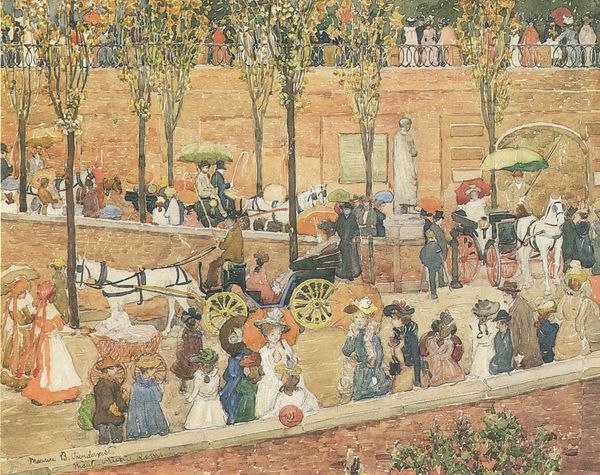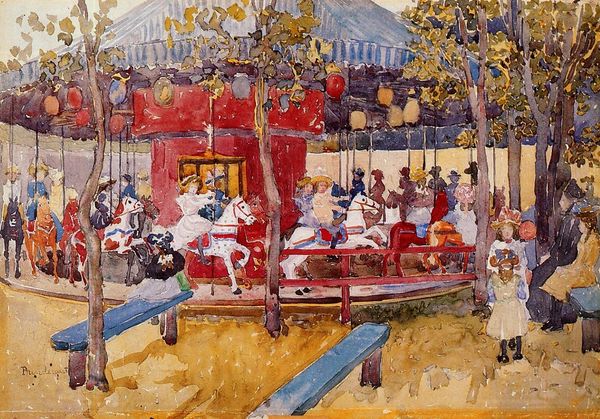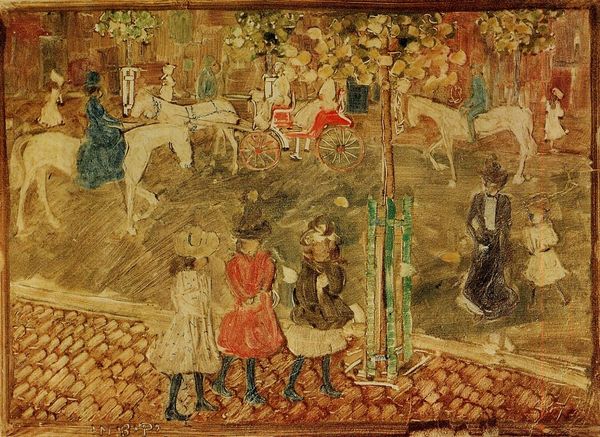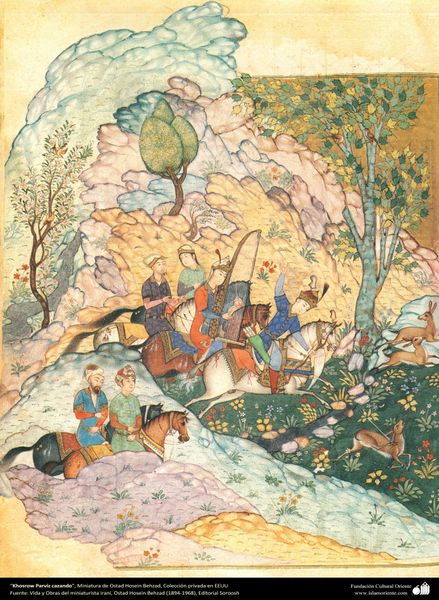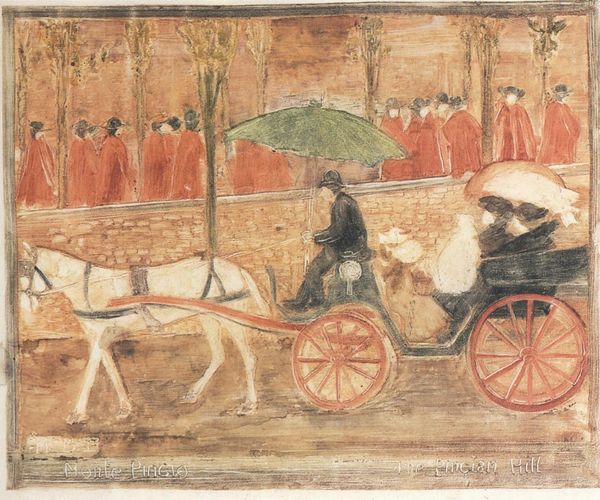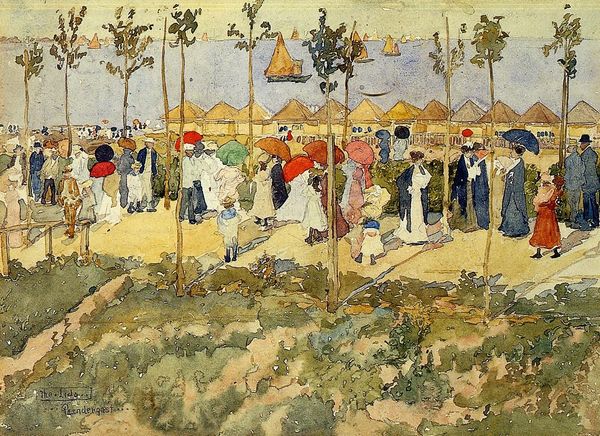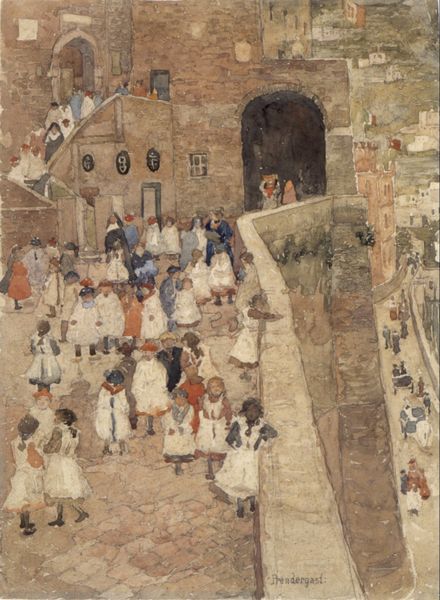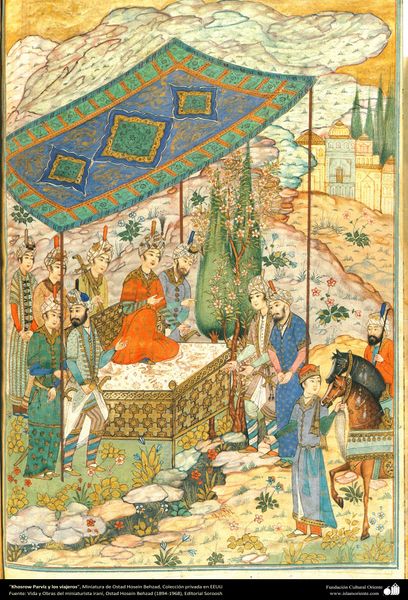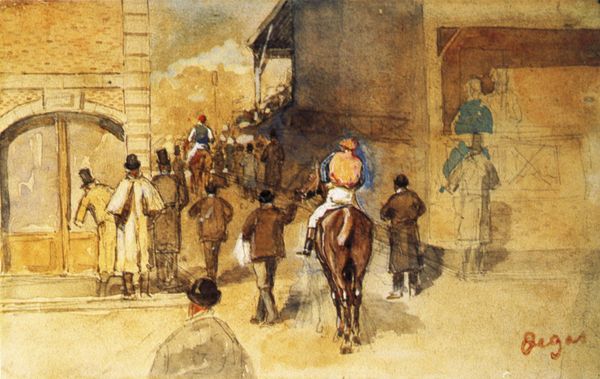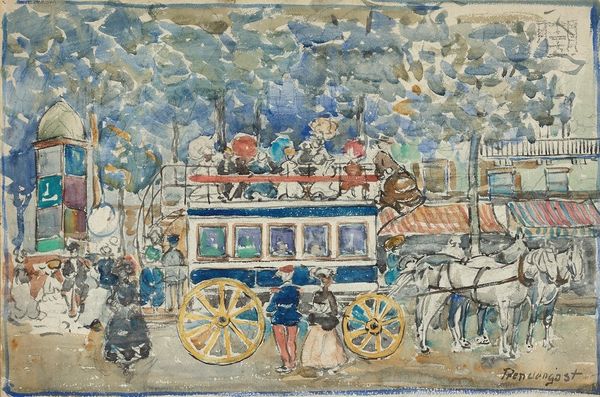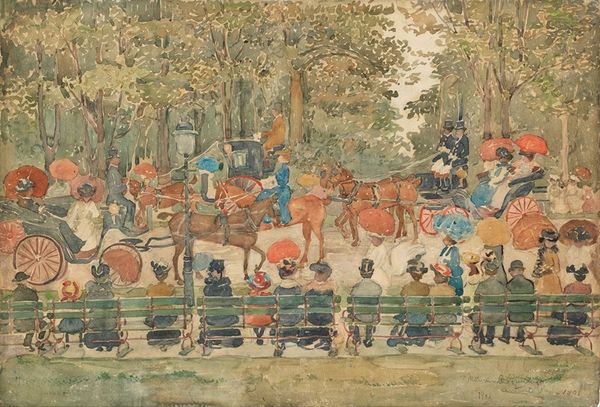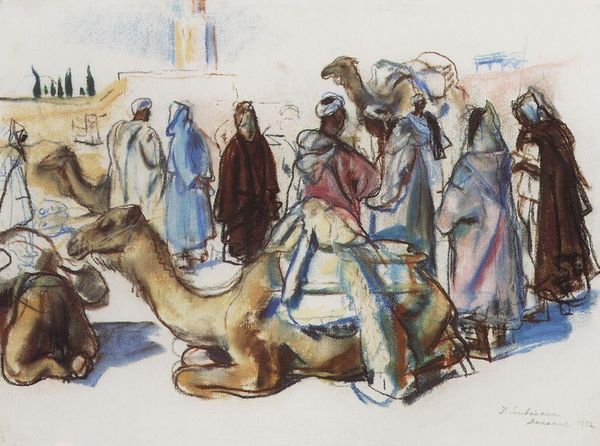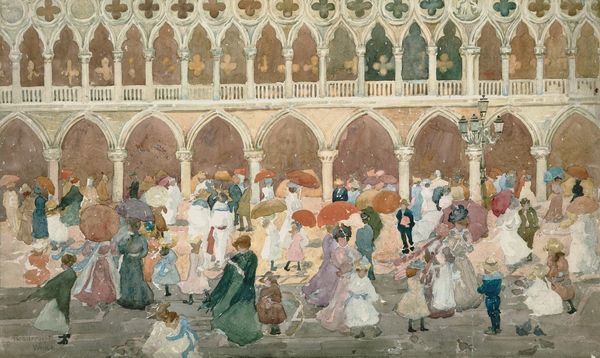
textile
#
garden
#
abstract painting
#
street view
#
textile
#
impressionist landscape
#
text
#
handmade artwork painting
#
oil painting
#
street graffiti
#
naive art
#
painting painterly
#
park
#
mixed media
#
watercolor
Dimensions: 38.42 x 26.99 cm
Copyright: Public domain
Curator: Looking at Maurice Prendergast’s "Afternoon, Pincian Hill" from 1899, I immediately sense a vibrant pulse, almost a musicality. What are your initial thoughts? Editor: My immediate impression is one of stratified privilege, a society physically arranged by class and access to leisure. Curator: The scene is quite abstracted. You’ll notice these tiny figures—blobs of color really—promenading along the Pincian Hill in Rome. There's a dreamlike, almost childlike quality to his execution. Editor: It’s true, there's a distinct visual hierarchy being presented. Those strolling at the top seem literally elevated, overseeing those relegated to the lower paths and modes of transport. There's an inherent power dynamic visible. Curator: Red pops up repeatedly in this piece, drawing the eye. We see it in the umbrellas, the wheels of carriages... Even that almost spectral figure near the middle is adorned with something red. Considering the era, red could certainly symbolize vitality and status. What do you think? Editor: And let's not forget the implicit politics of leisure represented. Who had the luxury of whiling away an afternoon this way, and at whose expense? The vibrant reds become a stark emblem of capitalist excess, a visual representation of unequal labor. Curator: Fascinating. What is more, Pendergast’s own socio-economic positioning during this time makes the lens of wealth and societal critique interesting. I think of him walking and observing from the hill itself… Editor: Exactly, how does he position himself in the visual hierarchy? Is he complicit in or critical of this presentation of wealth and social hierarchy? This moment in time reveals to me a world both beautiful and rife with tension, where leisure serves as a powerful marker of class. Curator: It brings the era—and its subtle unrest— into sharp focus. Editor: Indeed, thank you, for unraveling this fascinating interplay between art, status, and socio-political critique together. Curator: Thank you for your fresh perspective on the artwork's many layers.
Comments
No comments
Be the first to comment and join the conversation on the ultimate creative platform.
